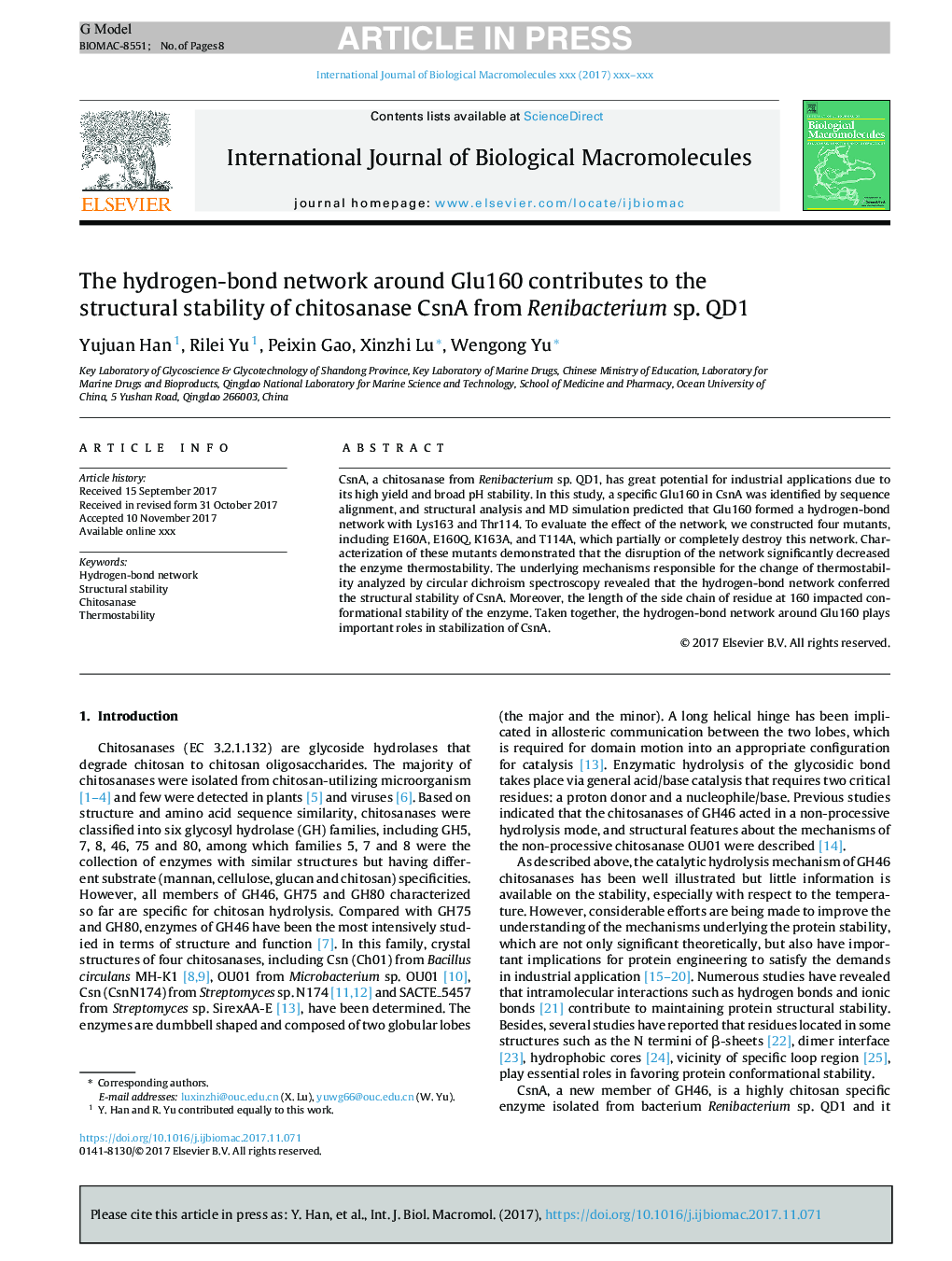| Article ID | Journal | Published Year | Pages | File Type |
|---|---|---|---|---|
| 8328549 | International Journal of Biological Macromolecules | 2018 | 8 Pages |
Abstract
CsnA, a chitosanase from Renibacterium sp. QD1, has great potential for industrial applications due to its high yield and broad pH stability. In this study, a specific Glu160 in CsnA was identified by sequence alignment, and structural analysis and MD simulation predicted that Glu160 formed a hydrogen-bond network with Lys163 and Thr114. To evaluate the effect of the network, we constructed four mutants, including E160A, E160Q, K163A, and T114A, which partially or completely destroy this network. Characterization of these mutants demonstrated that the disruption of the network significantly decreased the enzyme thermostability. The underlying mechanisms responsible for the change of thermostability analyzed by circular dichroism spectroscopy revealed that the hydrogen-bond network conferred the structural stability of CsnA. Moreover, the length of the side chain of residue at 160 impacted conformational stability of the enzyme. Taken together, the hydrogen-bond network around Glu160 plays important roles in stabilization of CsnA.
Related Topics
Life Sciences
Biochemistry, Genetics and Molecular Biology
Biochemistry
Authors
Yujuan Han, Rilei Yu, Peixin Gao, Xinzhi Lu, Wengong Yu,
